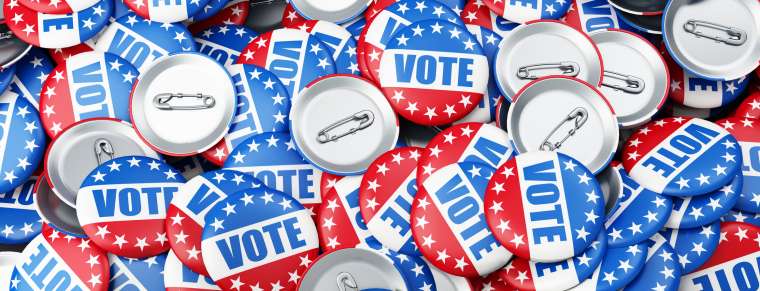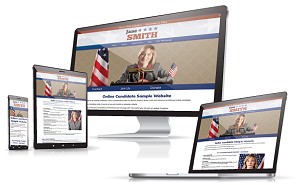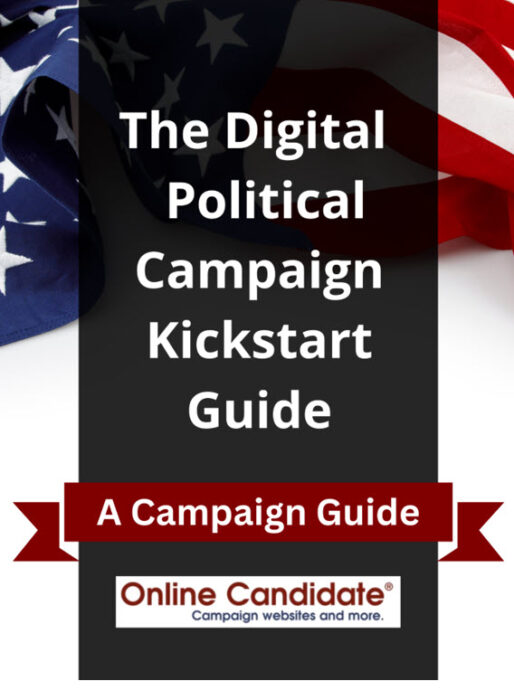So You Want To Run for County Government? Here’s How To Get Started
A county government is the local governing body that administers a particular geographic area that encompasses a county. It’s responsibilities include law enforcement, public health and safety, and infrastructure. County government serves as an intermediary between local municipal and state governments.
There are just over three thousand counties in the United States, each with its own unique governmental structure. Louisiana and Alaska have equivalent county governments. In Louisiana, it is called a parish and in Alaska, the borough. County governments are typically organized in a hierarchical manner with the county executive at the top. The county executive is responsible for implementing policies formulated by the county legislature, which is made up of elected officials from each district within the county.
How to run a campaign for county office:
What position do you want to run for?
In the United States, counties are governed by either a board of supervisors or a county commission. Its structure is typically governed by general state law, while some have local charters that outline their structure and powers. We’ve compiled a list of the major elected positions in county government and their functions.
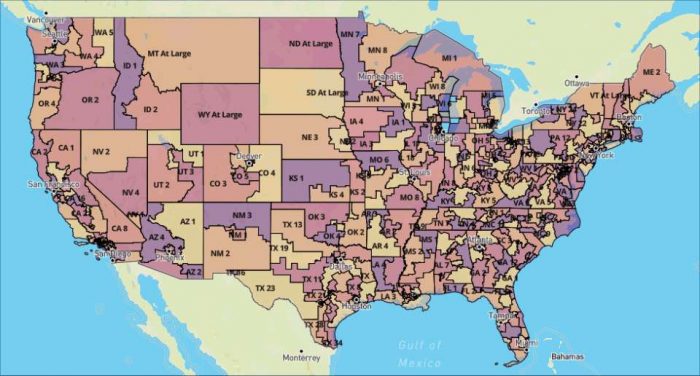
There are 3,007 counties in the United States.
County Executive
The county executive is the chief elected officer and head of a county government. The county executive is, in most cases, the highest ranking official in the county. As an executive, they are in charge of running day-to-day operations in their jurisdiction and enforcing the laws passed by the county legislature or board.
A county executive typically holds significant power to make decisions that effect the entire county, but still must answer to voters who can vote them out of office.
County Legislator
A county legislator is a person who represents the people of a district within a county. County legislators are responsible for voting on policies, managing the budget, and overseeing other aspects of local government. They are also responsible for overseeing county law enforcement, setting taxation rates, and approving the county’s budget.
County Sheriff
A county sheriff is the highest law enforcement officer in a county. They are responsible for upholding the law and protecting the people of their jurisdiction. County sheriffs maintains peace and order through patrols, investigations, and other means. In some cases, a sheriff will enforce state laws as well as local ones.
The office may also perform other duties, such as providing protection to judges as they travel between courtrooms and provide security at certain public events.
Every jurisdiction has its own requirements for candidates to become a sheriff. Most jurisdictions require candidates to have at some experience in law enforcement, perhaps as a police officer, or experience in the field of criminal justice.
County Coroner/Medical Examiner
Often another elected position, the county coroner is a medical professional who investigates unexplained deaths to determine their cause. The coroner analyzes the body and other evidence from the scene. They interview witnesses and speak to medical personnel who may have been involved in treating the deceased. Toxicology tests may also be ordered by the coroner’s office to determine whether the deceased had any substances in their system.
A coroner often has some level of law enforcement or legal training so they can testify in court. They may also serve as the county’s medical examiner.
County Clerk
The duties of a County Clerk vary by jurisdiction. The county clerk is also the keeper of the records for a given county. County Clerks are responsible for ensuring that all records related to county business are properly filed, alphabetized, and preserved.
The county clerk’s office may also be in charge of:
- Registering voters
- Issuing marriage licenses
- Recording deeds and mortgages
- Filing liens
- Issuing licenses and permits
They also ensure that all debts owed to the county are collected and that taxes owed by residents are collected.
Depending on state law, county clerks can either be elected or appointed.
District Attorney/Prosecuting Attorney
District Attorneys (or state attorneys) are the chief law enforcement officers in their jurisdiction. They also serve as the prosecuting attorney in county-level or local courts. The District Attorney’s Office is responsible for prosecuting crimes , conducting investigations, offering plea bargains and litigating appeals. They are responsible for sentencing recommendations, seeking evidence, and presenting cases against suspected lawbreakers and defendants.
County Treasurer
The County Treasurer is the person who manages the financial affairs of a county or other local government. This includes collecting, safeguarding, auditing and investing the county’s cash held in trust. A county treasurer ensures that taxes are collected properly and funds are distributed in an equitable manner. The treasurer is also responsible for issuing bank checks to pay county expenses.
County Assessor
A county assessor is responsible for assessing the value of properties in the taxing area. They are responsible for ensuring that real properties are assessed correctly to produce fair and equitable tax rates. In making an assessment of value, an assessor takes into account the property’s size, location, age and quality. Assessors also assist the public, conduct property searches, and they are responsible for maintaining all property records within their jurisdiction.
County Board of Commissioners
A county board of commissioners acts as a governing body for a county. The board sets policy, sets taxes, approves expenditures, and hires staff. Unlike most other forms of local governance, an elected board of commissioners both enact local ordinances and administer them. In other words, the board of commissioners acts as both the executive and legislative body.
If you want to get some firsthand experience without the rigors of an election, consider applying to join a county board or commission.
Here is a general road map to help you navigate the county election process:
Why should you run for county legislature?
County officials have the unique opportunity to address issues that affect residents across multiple towns and cities, such as regional planning, infrastructure development, and public health initiatives.
Are you driven by a specific issue facing your county, such as the need for better public transportation or more effective emergency services? Do you believe that current leadership is lacking, and you have the vision and skills to provide better governance?
Take some time to consider why you’d like to serve. Your goals should be in line with the responsibilities of the role and the needs of your community. A strong vision will act as the foundation of your campaign. A candidate’s goals often influence how they run for office, including such elements as their slogan and logo.
“Action is the foundational key to all success.” – Pablo Picasso
Check your eligibility:
The eligibility requirements for county offices vary depending on the jurisdiction. However, you should be aware of the following typical requirements:
- Typically, you must be a citizen of the United States and satisfy the age and residency criteria imposed by your state or county.
- Certain county positions may require specific credentials or experience. For instance, a county treasurer may demand knowledge of finances, while a sheriff may need experience in law enforcement.
- It is important to meet all filing dates and petition signing requirements. Contact your local election board to get the specifics for your jurisdiction.
“Whether it’s leaders from my own town of Braddock or leaders across the state in Bucks County or Adams County, I’m committed to always working with and listening to local elected leaders.” – John Fetterman
Assess your financial needs:
The cost of running a county political campaign can be substantial. You’ll need money for things like staffing, advertising, and campaign supplies. The size, population, and degree of competition in your county will all affect how much funding you’ll require to finance your campaign.
Take into account all expenses, such as printing, polling, venue charges, office space rentals, and employee pay. The price of advertising on TV, radio, and online should also be considered. Your fundraising efforts and ongoing donor support will play a critical role in financing your campaign.
Create your campaign committee:
A well-organized campaign committee is essential for managing and running a successful campaign. This committee should consist of individuals with diverse skills and roles:
- Appoint a treasurer who will handle campaign finances, ensuring compliance with election finance regulations.
- Open a dedicated campaign bank account to manage campaign funds separately from personal finances.
- Develop a detailed campaign budget with your committee, outlining expected expenses and sources of income.
- Assemble a team that includes a field director, communications director, and campaign manager.
Depending on their experience and skills, each team member should concentrate on a specific area of your campaign. This includes fundraising, communication, and voter outreach.
Ensure your campaign committee and staff are well-versed in local election laws and regulations to maintain legal compliance.
Secure endorsements:
Your campaign’s credibility can be increased by receiving endorsements from important organizations, other elected officials, and community leaders. Reach out to specific individuals and groups who may share your goals. However, keep in mind that there can be conflicts of interest when considering endorsements as they shouldn’t jeopardize your campaign’s principles.
“What generally happens in this county is that our politicians don’t serve us well because they don’t tell the truth, and they don’t keep their promises.” – Peter Garrett
Announce your candidacy:
Once you formally announce your candidacy, it’s time to execute your campaign plan. Through events, online platforms, mailings, and signage, promote your candidacy. During this stage, effective contact with voters and the media is essential because it helps raise campaign awareness and support.
Through an elected county position, you’ll be able to help shape regional policies. Running an organized campaign with a county campaign website can make all the difference.
Best of luck!
FAQs
What are the requirements to run for county office?
It is important to understand all the requirements and qualifications for any position you seek. To run for county office, one must be at least 18 years of age, must be a United States citizen, and must not have been convicted of certain crimes. There may be additional qualifications, depending on the state or specific county election laws.
How much does it cost to run a campaign?
Running for county office is expensive. The cost of running for county office can vary depending on the type of position, the size of the jurisdiction, and the size of the budget. In large counties, like Los Angeles, the average cost can easily top $500 thousand dollars.
How long does it take to run for county office?
Running for county office can take up a large amount of time and expense. It can take up to a year and a half to prepare and run for county office.
Your jurisdiction will determine the rules you need to follow, the time frame you have, and what kind of campaign you are running. You will need to file election paperwork with the appropriate agency.
Conclusion
The are many benefits to holding local and county office. Perhaps the greatest is that you can make a difference by creating programs that help people, by advocating for them, and by solving problems they face.
Sign up below for our campaigning tips. When you are ready to start you digital campaign, look to Online Candidate for a great campaign website and marketing services.
Reach Early Voters Online: Mail-In and Absentee
Reaching early voters is more important than ever, particularly for primaries and local elections, where voter turnout can make all the difference in winning.
Two methods for casting a ballot during an early voting period:
- Registered voters that can vote in person at designated early-voting sites in their county.
- Absentee voting that allows for voting by mail.
Political candidates and campaigns can help supporters by providing education and information about the process. This includes when absentee ballots are sent or available, how and where the ballots can be cast, what requirements are needed to make a ballot valid.
The rules governing absentee and early voting vary depending on state. For example, some states require an excuse for voting by mail. Check your state or local voting regulations for the latest changes.
Inform and reach early voters in a campaign
Keep your campaign website up to date on the latest news throughout the election season. Encourage visitors to follow your campaign through the other channels. The more ways you can reach a voter, the better. This is even more effective if you can get people to specifically opt in for contact, such as through email.
Target voters who support you, particularly those who have a history of casting early ballots.
Digital is now firmly a part of any politician’s media plan. Online advertising extends and complements the reach of television and radio. Here are several popular ways to reach voters and constituents.
Social media advertising to reach supporters
Social Media marketing works well because you can target your specific voting audience. For example, Facebook’s targeting options include age, region, educational background and more. You can even reach voters based on their connections. Tailoring your ads to specific audiences works best.
Note that Facebook and Twitter now have verification processes for political and issue-based advertising. This can take some time to complete, so you will want to start this process long before you plan to run any ads.
Pay Per Click (PPC) advertising to target candidate searches
PPC ads are text ads that appear on Google, Bing and other search engines. You bid on specific search keywords or phrases and your ad appears at the top of the search engine results. You only charged when people click on the ad. PPC advertising is also the easiest to track. Google Adwords and Bing Ads are the two largest PPC services.
Display ads on sites your voters visit
These are visual ads (banners ads) that appear on third party websites. Most display advertising is bought either on a flat rate or through a Cost Per Thousand (CPM) model. For example, 100,000 ad impressions at a $10 CPM costs $1,000. To calculate the amount paid per impression, divide the CPM by 1,000. For example, a $10 CPM equals $.01 per impression.
Website ads: Local newspaper websites are a good place to run display ads. Their visitors are already engaged in news and likely more interested in political advertising.
IP Targeting: IP Targeting uses individual IP addresses to reach specific voter households. It matches IP addresses to street addresses and then displays your ads on websites they visit across the internet.
Related: 9 Tips For More Effective Political Banner Ads
Retargeting/remarketing to reach out a second time
Retargeting is as way to display advertisements to people who show an interest in your campaign.
When a user goes to your website, a tracking pixel is set in the user’s browser. After that, the user will see display banners about your campaign on other websites as they surf the web. Retargeting will remind them about your campaign.
You can set this up yourself through Facebook Remarketing and Google Remarketing. You may find it easier to set up remarketing campaigns through a third-party platform such as SharpSpring.
Related: How Does Retargeting Grow Your Political Campaign?
IP Targeting to voter’s physical addresses
More campaigns are starting to use IP targeting method to directly segment and reach voters. Physical mailing addresses can be translated to IP addresses, allowing ads to be targeted to computers and mobile devices a household basis.
You can reach members of your party, households matching a certain demographic or even specific geographic locations. IP-backed banner ad campaigns have been shown to be more effective than other online ad methods, like traditional banner advertising.
Learn more about political campaign IP Targeting.
Online video marketing
Most political candidates who use video have a presence on YouTube. A wide variety of video ad options are available. You can target specific audiences by interests and keywords. You can also measure results such as views, click through rates, and amount of video time watched.
One popular ad options is the bumper video. This is a video ad is 6 seconds or shorter that plays before, during, or after another video. Viewers do not have the option to skip the ad. The cost is based on the number of ad impressions shown.
Campaign videos can also be posted and promoted through your social media accounts.
Related: 5 Political Campaign Video Ideas
Email marketing
We’ve saved one of the most powerful tools for last. For email marketing, you first need to build a list of email addresses. Start collecting addresses early through your campaign website or even from offline events. Always ask or get permission before adding any email addresses. Political spam is just as annoying as the regular kind.
Don’t run your email campaign through a personal email account. Use an email marketing service to send emails. These services include email templates, autoresponders and the ability to automatically add and remove subscribers. They also provide better deliverability for mass mailings.
How do you reach voters online? Political candidates can cut through the online clutter and directly reach anyone. The catch is, you need to pay for that access.
Related:
Offline voter outreach
- Early Canvassing: If you are going to be walking door-to-door, you should concentrate on the precincts and areas where a large turn out is needed to win. The candidate might want to work these areas in person to reach voters.
- Mailers: Early voting mailers should be targeted to specific households and provide information about the dates and process for voting ahead of Election Day. You can also include websites or links for additional online resources.
- Phone calls: You can have volunteers or use phone calling services with scripts to help inform and provide early voting information to those who may need it.
Pay attention to early voting dates and requirements. With the large number of early voters, start planning ahead of time to find and reach out to them. For those genuinely undecided voters, getting to them first could mean getting their support. Every early ballot cast is one less ballot you need to worry about on Election Day.
Already have your early voter list? By matching physical addresses to specific online IP addresses, IP Targeting lets you send banner ads to key voter households with unprecedented precision. Learn how you can reach voters through IP Targeting.
Political Design: Creating an Effective Campaign Presence
Political design is a form of marketing to influence voter’s opinions or behaviors. It is used in election campaigns, advocacy websites, and organizations. The goal is to persuade their audience in a way that benefits the organization or candidate.
The best political graphic design makes a candidate or organization stand out through a custom color palette, brand message, and imagery.
Main Highlights
- Clean, clutter-free designs with appropriate color schemes and typography choices can effectively convey political messages and resonate with target audiences.
- The “hero image” is central to first impressions, requiring high-quality, candidate-focused visuals that establish professionalism and identity.
- Beyond design, clear presentation of the candidate’s stance on issues, background, endorsements, and voter resources are essential for an effective political website.
- Persuasive design combined with current trends, like simplified homepage designs, video usage, catchy imagery, and responsive layouts, ensures optimal viewer engagement and accessibility.
Read on to learn more about the aspects of good website design and how Online Candidate can help you achieve this.
- Clean, professional design = Powerful message
- Choose the best colors for your political website
- Fonts can impact a website’s aesthetic
- Pay attention to your images and graphics
- Including the right content matters
- Features and functionality
- What are the latest trends in political web design?
- Conclusion
Clean, professional design = Powerful message
Local political campaigns, such as for city council and mayor, are usually less costly and smaller in scale than national or state-wide races. They are often used as stepping stones for candidates who want to run for higher positions in the future. Congressional races can also be seen as local, but they typically have more funding and publicity due to their size.
Design is one of the most important aspects of any political website. It is what makes the site visually appealing, aesthetically pleasing, and easy to navigate. Elements such as color, fonts, and even layout can help convey political messaging.
Your look should be clean, clear, and concise – all attributes that are valuable to any candidate running for office. A cluttered design will cause visitors to bounce off the site and go elsewhere.
How to choose the best colors for your campaign
Choosing a color scheme design is a crucial element when you start your campaign. Colors evoke emotions and greatly reflect a candidate’s personal brand or organization’s identity.
Color psychology plays a significant role in determining how voters perceive you. The color you choose for your design may depend on your political affiliation. For example, Republican-leaning websites are often more likely to use reds while Democratic-leaning sites are more likely to use blues and greens.
Some of our clients find picking the right colors to be tricky, but here are four good design guidelines to follow:
- Choose colors that match your campaign brand identity.
- Avoid clashing colors. This may draw attention, but for all the wrong reasons.
- Choose complimentary colors for accents. This will not only make it easier on the eyes, but it will also help you stand out from other sites with similar color schemes.
- Make your call-to-actions clear by using contrasting colors and fonts.
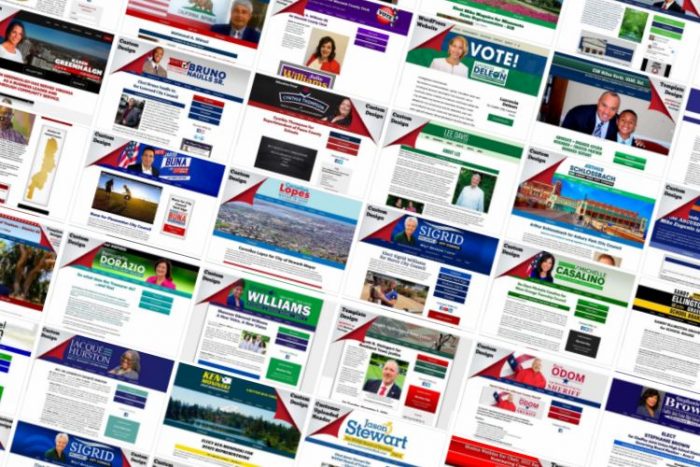
Political website colors often go beyond the traditional red, white and blue.
Fonts can impact your overall aesthetic
Typography is an important part of branding. It can give a logo and website personality and make it more attractive to the eye. Fonts are often overlooked in the design process, but they can have a substantial impact on a website’s overall aesthetic. They can help convey values and emotions to your readers.
Serif fonts have small lines at the end of letters, which make them easier to read in print and on screens. Sans-serif fonts are much cleaner and simpler than their serif counterparts. You may notice that most political logos use a sans-serif font because it is easy to read and works well on campaign signage. Script fonts are much harder to read at a distance. Many designers will choose one typeface family as their primary font style and then use secondary fonts to complement it.
To target more conservative audiences, consider using more blocky sans serif fonts like Arial or Verdana. When targeting more liberal audiences, consider using serif fonts like Times New Roman or Georgia. These are broad generalizations, of course. Modern typefaces and fonts such as Open Sans, Oswald, Roboto and Alfa Slab One are very popular today.
For example:
- The Alexandria Ocasio-Cortez website splash page uses Roboto Slab for the headers, and Metropolis for the body font.
- Joe Biden’s site uses MercuryMedium for the headers, and DecimalBook, sans-serif for the body font.
- Donald Trump’s siteuses Montserrat for both the header and body text.
One way that we figure out which font to use on a client’s site is by finding out what font the candidate uses in their campaign print materials. If they use a unique typeface, then we try to incorporate that specific font into their website.
With Online Candidate, you can choose one font for headers and a separate font for the body. We typically use two fonts for custom designs, as well.

Sample wide hero image on a political website home page.
Pay attention to your images and graphics
In digital marketing, you can’t go wrong with images. They are an important part of your content and they should be used in a way that is eye-catching and grabs the attention of your audience.
The hero image is the first thing that people see when they visit a website. If you are looking to use a head shot of the candidate to use as your hero image, here are design tips:
- Create a well-designed logo. It must be unique and stand out visually to establish a candidate to a wide audience. (Our custom design packages includes a campaign logo design.)
- Make sure your images are clear and in focus. High-resolution images are best for web designers to work with.
- Avoid a group shot. It is not as good as an individual image, because it takes away focus from the candidate. Save group shots for interior pages.
- Don’t just use any photo. Make sure your candidate hero images present you in a professional way.
- Photoshop is your friend. Use graphic design software to color correct, sharpen and improve your images. A little touching up can go a long way.
Invest in some good campaign photography for high-quality, high-resolution imagery. Images need to be professionally taken and have a good resolution. However, many of our clients have had success using their own pictures that taken from a smartphone.
Online Candidate provides a library of open-source images for you to use. We also provide access to free graphics and Canva templates to save time and make creating the visual aspect of your site and print materials easier.
Including the right content matters
Clever design is not enough for a political website. No one ever voted for a candidate because of a flashy logo or color scheme. What the candidate stands for is equally important. That means the design of the site also requires content that fleshes out who the candidate is, how they stand on the issues, and how their policies will benefit the voter.
Political candidate sites should have the following sections:
- A home page that acts as the hub of the website
- A bio or about page of the candidate
- The stances on various issues, usually over multiple pages. The information in this section should be easily accessible and easy to understand for voters.
- A list of endorsements and supporters
- A volunteer page for those who want to help
- A donation page for those who want to contribute
- A voter page that provides links and resources for early voting and information on upcoming elections.
- An online press kit for reporters and the media.
All of the content on a political web should be easy to find and read. Many of the pages listed above come pre-built with our system. If you are looking for additional website content for inspiration, we have copy samples for politicians, judicial, sheriff and school board campaigns.
The layout of your homepage matters, too!
A visitor’s first impression of a site is made almost immediately, so the homepage design is critical to how users will perceive your campaign. The homepage should include a photo of the candidate. This can be in the site header, or in a hero image below the site navigation. Most home pages include personal information, such as the values the candidate represents, what matters most to them, and what they stand for politically.
Some campaigns use a simple home page layout, focusing on the calls to action. However, if you save information about the candidate for the bio page, you may have that page rank higher in the search engines than your home page.
Pro tip: Include relevant calls to action throughout your site, which could be something like “Register to vote”, “Donate”, or “Get updates”.
How to achieve politically persuasive design
Persuasion is a powerful tool in both web design and politics. It can be used to influence the audience and convince them to take an action. The goal of political web design is to shape public opinion through persuasive design. This can be done by using persuasion techniques to promote a specific message or ideology.
Persuasive web design incorporates the following key elements:
- A clear message that promotes a candidate and his or her positions on the issues
- Clear, concise copy with headlines and subheaders that makes the message readable
- A clear call-to-action that informs visitors what they are supposed to do (Ex. Vote for me, Subscribe, Follow Us on Social Media)

A good website design begins with a creative logo.
The latest trends in political web design
There is no formula that will help you create the perfect political website design, but there are trends that most campaign websites today seem to follow.
- Home pages often have a ‘hero shot’ which may be a large image with the candidate just under the navigation bar.
- There has been a trend toward simplification of images and text. Sliders are out, as is unnecessary clutter, too many animations or flashy graphics which can distract the visitor from the message.
- Many campaigns are using video in their home page to attract viewers to their site and get across their message.
- Another trend that has caught on over the last election cycle is using simple and catchy images to represent a particular party.
- In 2021, we started seeing the return of QR codes!
The layout of the website applies not only to where images are placed or text flow, it also on a technical level. In a responsive layout, a webpage adjusts to fit different screen sizes without having to change the webpage’s code. This ensures that your website is viewable with all devices and all browsers.
Conclusion and final thoughts
A good website is an important tool in any political campaign for candidates running for local, state, or federal public office.. The way that a website is designed can make or break the outcome of the election. Campaign websites should be designed to be politically savvy and provide voters information about the candidate’s stance on different issues.
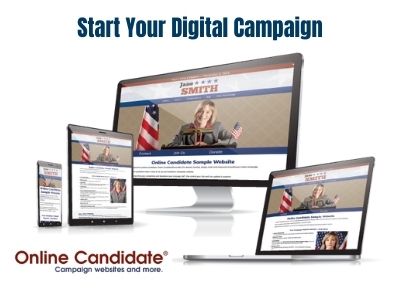
At Online Candidate, we’ve been doing political websites since 2004. What package is best for you?
Related:
Why Your About Page Ranks Higher Than Your Home Page
From time to time, clients ask us why their campaign website isn’t ranking on Google for the candidate’s name.
There are several reasons why a website may not rank. It usually has to do with the amount of time a website has been live. Just because a site is created does not mean that Google will know that it exists. Search engines need to crawl web pages and index them in order for them to show in search results.
How do search engines find websites? Links are important in both quality and quantity. Most new political websites will get their first links from social media accounts, news articles and online press releases.
Another major (and common) reason for a failure to rank is due to the home page lacking important text. This includes information such as the candidate’s name, location and position being sought. Pages written in first person are especially problematic.
After all, how can a search engine be expected to know who “me” and “I” are referring to on a web page?
 The home page is considered the most ‘important’ page of a website. It is typically the page that appears in common searches related to the site’s theme (such as the candidate’s name). Sometimes, though, a candidate’s “About” page appears in the search results ahead of or in place of a website’s home page.
The home page is considered the most ‘important’ page of a website. It is typically the page that appears in common searches related to the site’s theme (such as the candidate’s name). Sometimes, though, a candidate’s “About” page appears in the search results ahead of or in place of a website’s home page.
Many of these items are political SEO factors that are used to determine a web page’s ranking in search.
So why would an About Page get top billing?
There is not enough Home Page text: We see this a lot. The home page is dominated by a large photo (or a splash page) that has very little text in it. Search engines reply primarily on text content to figure out what a web page is about. If there is little text or information for the search engine to read, then there may not be enough ‘meat’ on the page for it to rank properly.
Plenty of text on the About Page: Conversely, if your About Page (or any other page) has a large amount of text and detailed information about the candidate, that will likely be the page that the search engine favors.
Incoming links: This can happen on rare occasions but having too many links from outside sources point to a particular page can cause that page to be ‘over-weighted’. Generally, most links to a website point to the site’s home page. However, if an interior page attracts a lot of links, it may end up ranking for candidate name searches.
How to fix the ranking problem
If you have a problem with the wrong page ranking for general searches, try improving your home page content and/or removing any splash pages you may have in place. Getting a few links to point to your site’s home page can help as well.
Sometimes the ‘About’ page just has better content than the Home Page. If that happens, why not move some or all of that content to the home page? After all, if it’s that good, why bury it in the site?
There are a number of factors that go into search rankings. Though you want your website to rank well, create your content first with readers in mind. One tip is to create the site copy as if it is for someone who does not know the candidate or the issues on which they are running.
Related: SEO Strategies for Political Campaigns
Launch your political campaign website today! We also offer additional service packages, including our Site Launch Package, Social Media Setup, Campaign Intro Video and our Email Setup Service.
School Board Campaign Logo Design
School board campaign logos are primarily used to represent a specific candidate and to establish a connection with parents and voters.
Candidates for local school boards need a logo design that will help them rise above the noise and show off what they really stand for: Education, Community, Excellence.
Want a free logo design for your campaign?
Hiring a professional designer is expensive. Web graphics are created in low resolution. High quality graphic files are needed for campaign brochures, prints, and signs. Online logo makers charge money download a decent quality graphic file – and you after you’ve done all the work!
Our custom political website packages include a free professional logo design. We provide clients with those high-resolution logo files for free so your branding is consistent.
Local candidates tend to fall under local rules or restrictions for signage. There may be regulations on using certain imagery or text. Be sure to know any existing rules so you don’t run into problems later. If we suspect an potential problem while we are creating your graphics, we’ll let you know.
Sample school board candidate logos
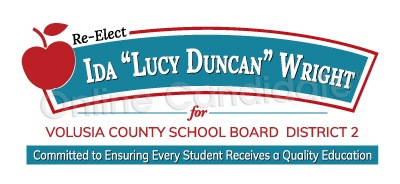
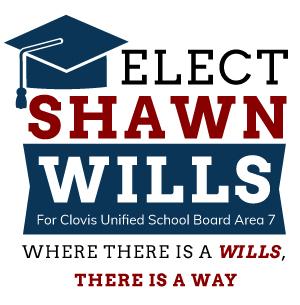

Find more examples of logos for school board candidates.
School board logo creation tips
- Keep it simple. Candidates for board of education or superintendent positions may use either serif and sans-serif fonts. Script lettering on logos (to resemble chalk) is usually not recommended as it is harder to read and it may not translate well to print materials and yard signage.
- Use additional Elements. If you want to add a graphic element, try a mortar board or apple. When we use graphics like this, we try to integrate with the text.
- Limit the number of colors. School board campaigns incorporate most any colors, from black (as in blackboards) and white to green and red to blue and white and everything in between. Crazy colors may get attention and let the viewer know that you are running for a non-traditional office. However, an odd look also distracts from your message.
- Stay consistent. If you choose to invest in a logo design, we recommend not changing the look later in your campaign. Solid graphic design is a crucial aspect of campaigning and a lot of it can be tied back to your logo. If you change it, the look and feel may be completely different which creates a whole new voter brand identity.
School board campaign logo templates are also available
Don’t need a website? We carry school board candidate logo templates for both Adobe Photoshop and Canva. Either a free Canva account or Adobe graphic software is required, depending on the template purchased. We also offer print design services for our clients.
Our Custom School Board Website Packages includes a free custom logo design and header. We’ll also provide high-res versions for your print material. Why pay hundreds of dollars to have a designer make you just a logo? We’ll create one for you – and it’s included with your website.
Related:
Questions for First-Time Political Candidates
Every two years in the United States, over 500,000 public offices are up for election. During that time, more than a million and a half candidates will seek elected office. For many of these candidates, it will be their first race.
If you’re thinking about running for office this year, you’re not alone. But preparation is essential. Many first-time political candidates find the process overwhelming. This FAQ covers the most common questions about how to run for office—and win.
- How do I win an election?
- What are some good reasons to run for elected office?
- What political office should I run for?
- What are the requirements to run for office?
- When should I fill out my candidacy application?
- How much money will I need to raise to win my election?
- How can I raise money for my campaign?
- How do you create a political campaign strategy?
- What positions are needed for a campaign team?
- How many votes do I need to win an election?
- What is a good campaign slogan?
- What are ways to get your message out to voters?
- How can I leverage online advertising for my political campaign?
- What is GOTV?
- What will surprise me most about running for office?
- What happens when I win my election?
- What happens if I lose my election?
I want to run for political office. How do I win an election?
Let’s get to the most common question: How do I win an election?
Winning an election comes down to this: persuasive, repetitive communication with people who are likely to vote for you. You need to find your supporters—and get them to the polls.
It doesn’t matter if you are running for local town board or a county, state or federal office, basic campaigning steps and techniques apply.
What are some good reasons to run for elected office?
Running for office is a big step. It’s not enough to be qualified or interested in the job. There are many reasons why someone may want to run for elected office, but the best reasons are usually rooted in service and community improvement.
Positive motivations to seek office include:
-
A strong desire to make long-term changes for social justice
-
The belief that you can make a difference in your community
-
Personal growth through public service
-
A desire to shape public policy for the better
Regardless of your reasons for seeking elected office, you should have your reasons ready for public discussion. All candidates should have a quick elevator speech to explain, “I’m running for office because…” or “I want to run for local office in order to…”
Related: Should You Make The Run For Local Office?

What political office should I run for? Here’s what you need to know
Choosing the right political office to run for depends on your goals, skills, and chances of success.
- Most elected offices in the United States are at the local level. There are plenty of positions choose from. Local elected offices include town, village, county and city councils, school board members, water districts, ward alderman, county treasurers and clerks. Then there are state and federal positions, like state representative and congress.
- Some candidates choose an office because they feel they can win it. Just because you can win a race does not mean you will like the job, particularly if you do not have a clear motivation for seeking it.
- Running for a less competitive office can improve your chances of victory. It can also provide experience for a better position later. It’s better to compete in a race you can win, rather than choosing an office that you have little chance of winning. Don’t run to lose.
- Before you decide what position to pursue, you should know its roles and responsibilities. The office you run for should relate to the reason why you are seeking public office in the first place.
One way to approach the question is to consider your own skill sets and determine what office best suits your talents. If you have law enforcement experience, running for sheriff might be a good fit. If you are an engineer, perhaps you might want to seek a water commissioner position.
Related: What Are Easiest Political Offices To Run For?
What are the requirements to run for office?
The requirements to run for office vary by state and position.
Common requirements include:
- Being a minimum age (often 18 years old)
- Being a registered voter
- Residency in the district or area you wish to represent
- U.S. citizenship
Examples of age and other requirements:
- U.S. Senator: At least 30 years old, a citizen for 9 years, and a resident of the state.
- U.S. President or Vice President: At least 35 years old, a natural-born citizen, and a U.S. resident for at least 14 years.
Additional qualifications (depending on the office):
- Judge: May require an undergraduate or law degree.
- Sheriff: May require law enforcement certification and a background check.
- School board member: Typically a district resident and registered voter.
Visit your Secretary of State or county election website for specific requirements in your area. They include leadership training, campaign resources and checklists describing the necessary requirements to start and run a campaign. These helpful organizations include the League of Women Voters, Vote Run Lead and many more.
Related: Political Candidate Training Courses and Programs
When should I fill out my candidacy application?
Filing your application for candidacy is straightforward, but there are important rules to follow.
Steps to apply:
- Confirm you meet the qualifications for the office.
- File your paperwork before the deadline. These dates are listed on your Secretary of State (or governing body) website.
- Pay any required fees.
- Submit petitions with the required number of valid signatures (if applicable).
Some filings go to your Secretary of State; others go to your local election district or county.
Filing deadlines are non-negotiable. Missing them means you won’t appear on the ballot.
How much money will I need to raise to win my election?
The short answer: You will need to raise more money for your campaign than you probably think.
Seriously, though, the best to figure out how much money you will need to raise is to research what other campaigns for the same or similar office have spent in your area.
In the U.S., most local offices require a budget of 20 to 25 thousand dollars. This money is spent on campaigns signs, advertising, public events and fundraisers and maybe a few part-time staff.
For statewide or federal races, the budgets run into the hundreds of thousands to millions of dollars. You’ll need a pair staff for communications and legal compliance. Your advertising budget will be much larger, as well.
Be sure to review relevant campaign finance laws and regulations so you know how much you can legally raise and how you can legally spend your campaign funds. You can get initial campaign finance information from your Secretary of State website.
Related: How Much Should Your Political Campaign Budget For Digital?
How can I raise money for my campaign?
In the United States, you will have to spend some amount of money on political activity to win an election. If you cannot afford to self-finance your own campaign, then you will have to raise money from others.
You will need a bank account for your campaign in order to collect donations. This account must be in your campaign’s name, and not a personal bank account.
Be sure to keep detailed records of all donations and expenses. At some point, you will need to declare that information. You will want to hang on to those records even after the election.
Fundraising is an important part of campaigning. Reach out to your political party to see if they can offer financial assistance. Even if they cannot provide money, they may be able to point you into the right direction as far as donors and potential resources.
Check how much was spent on previous elections for your desired office. Your budget for campaign signs, literature, campaign staff and travel should also be factored to determine how much money you will need to raise.
Common political fundraising methods include:
- Fundraising Letters
- Telephone Requests
- Holding Fundraising Events
- Accepting Donations Online
- Email Marketing
- Door-to-Door
- Text to Give
Start your political fundraising campaign as soon as you can. In many cases, you can start to raise funds before you announce your intention to run for office. This will help pay for initial campaign expenses.
Be cautious with your fundraising budget. Don’t overspend on fundraising efforts that fail to cover their costs.
Related: How Candidates Raise Money For Local Campaigns

How do you create a political campaign strategy?
The first step in creating a political campaign strategy is to define your audience. Who will you be targeting?
This will help you create an effective strategy because now you know who your message is for and how it needs to resonate with them.
The next step is finding out what they care about most, their cultural beliefs, economic status, etc. You need to find out what’s important for them so that your message is tailored towards them and resonates with them specifically.
Every campaign requires a unique strategy for victory. Most candidates will write out a political campaign plan before they decide to run for office. You may want to work with others in creating this plan. Your own campaign strategy will depend several factors. They include the size of the electorate, the locality, the issues at play, the voter outreach methods and the general timeline of the election season.
A strategic summary encapsulates your campaign’s goals. Yes, it’s to win the election, of course. But you can also expand this summary to include the broad strokes of the actions that your organization will take. It should include a general overview of why you are running and what you plant to do if elected.
You will also want to include your vote goal, locations and/or voter types you wish to specifically target. If you are in a primary, you will want to take your opposition into account along with potential challengers.
What type of media exposure do you expect to gain? What are your plans for coverage by local media? Who will speak with and handle reporters? What paid media will you use – and how much will it cost? How do you plan to use television, radio and online channels?
Your timeline is very important. This where you lay out the campaign calendar. You will need to decide when you announce your campaign, when events and fundraisers are held, when press releases are scheduled, when you will start spending money on media and your GOTV efforts.
A solid campaign strategy is detailed yet flexible. Expect things to change and adjust your plans as needed.
Related: Creating an Online Campaigning Plan

What positions are needed for a campaign team?
One of the first things to do when starting out is to create a political campaign committee. You will need a committee in place in order to legally accept donations and spend money on your campaign. Rules and requirements on establishing a committee vary from state to state. Your state election website and local county Board of Elections can provide you with information and the paperwork necessary to start your campaign committee.
Politics is a group effort. You need the right people and the right structure to make up your campaign team. Larger campaigns require a more extensive team, but even a small campaign requires a campaign manager, fundraising manager and treasurer.
- Campaign Manager: The role of campaign manager is critically important. A campaign manager takes the lead on everything related to your campaign and acts as the primary contact between the candidate, the staff and outside help. In small campaigns, they are often the only paid staff member. A candidate should NOT act as his or her own campaign manager.
- Campaign Fundraiser: You need someone to responsible to raise money. A campaign fundraiser or finance director is responsible for keeping the candidate on track with fundraising efforts and overseeing fundraising events. A campaign fundraiser must be well-organized, outgoing and willing to push hard to meet their goals.
- Campaign Treasurer: The campaign treasurer oversees the campaign’s financial and accounting operations. They approve expenditures and help with maintaining the budget. They also track contributions, maintain financial records and are responsible for compliance with the relevant election board. Whoever you pick for this position should be highly responsible and have experience in accounting or finance.
Additional helpful roles:
- Volunteer Coordinator: This is someone who can manage volunteers and keep multiple activities running smoothly. This should be someone who can work well with people and keep the volunteers organized.
- Field Director: This person oversees the operations that gets the campaign message out through direct voter contact. This includes door-to-door canvassing and managing phone banks. They may also organize voter registration efforts and final GOTV operations.
- Political Consultants: While paid consultants are usually used in larger campaigns, you may decide that you want to hire consultants for specific tasks. They often have expertise in political strategy, advertising efforts (digital, mail, television), field operations and more.
Choose team members who are reliable, skilled, and aligned with your campaign goals.
How many votes do I need to win?
This is a question you should have figured out right at the beginning of your campaign. You need to know early how many votes you require, and you need to know where those votes will come from. To win a local election, you need a majority of the votes cast.
Basically, the winning formula is:
Expected Vote x .50 + 1 vote = Minimum Votes to Win (50%)
Expected Vote x .52 = Comfortable Margin of Victory (52%)
For more accurate numbers:
- Review past election results in your district.
- Factor in expected voter turnout and any demographic shifts.
Here is more information on determining the votes you need for election victory.
What is a good campaign slogan?
It doesn’t matter if what you are running for, be it mayor, county sheriff, town, or state legislature – your campaign should have a slogan. Campaign slogans summarize the essence of your race in a single phrase.
Tips for creating a strong slogan:
-
Keep it short (3-5 words is ideal)
-
Reflect your campaign values and personality
-
Make it positive and future-focused
-
Easy to remember and repeat
What are ways to get your message out to voters?
You can try to get your message out to voters by using traditional media, such as newspapers and television. Political advertising has a long a varied history. You’ll have a lot of competition to get voter’s attention during election season. The major communication mediums include:
- Campaign literature. This includes brochures, flyers, door hangers and other print materials that are used for direct mailings.
- Campaign signs are another traditional advertising method. Lawn signs help build name recognition for candidates.
- Other paid media coverage. There are many channels available for this purpose. Newspaper advertising is still a popular medium. Television and radio advertising are common but are typically reserved for campaigns with larger budgets. Other affordable advertising channels include digital advertising.
Virtually all political advertising requires a disclosure statement stating who is responsible for the content of the ad. These rules vary by state.
How can I leverage digital advertising for my political campaign?
There are many ways for political candidates to promote their campaigns online. A campaign website and social media (primarily Facebook and Twitter) are the most common promotional platforms.
Most online advertising is of the paid type. If you are looking for any real exposure, you will need to spend money. The most common methods of promotion include:
Social media platforms and search engines are demanding more transparency and verification from political advertisers. If you plan to advertise on a certain platform, make sure you know what information is required to become authorized. Give yourself enough time to become properly verified.
Related: How Much Should Your Campaign Budget For Digital Advertising?
What is GOTV?
Get Out the Vote (GOTV) is an organized effort by a political party or campaign to encourage citizens to vote during an election. It is also a term that can be used to describe any of these three facets of electoral politics:
- Non-partisan efforts to increase voter turnout, as with voter registration drives and voter education.
- Campaigns by political parties, candidates or supporters to encourage or help voters cast their ballots for a particular party, candidate or ballot measure.
- Coordinated campaigns among multiple groups, often on a state level, aimed at influencing the outcome of elections.
GOTV focuses on turning out voters who are considered likely supporters by using reminders about voting deadlines, emphasizing how important their vote is, and/or applying pressure through fear tactics. An effective get out the vote strategy can mean the difference between victory and defeat, especially in close races.
What will surprise me most about running for office?
Expect negativity—and be ready for it.
Campaigns can get nasty, and you’ll need a thick skin. If you have any skeletons in your closet, assume they’ll come out.
Other surprises:
- How much time campaigning consumes
- The pressure on your family and personal life
- How quickly things move as Election Day approaches. Here are a few other things you might want to know.
What happens when I win my election?
Congratulations on your electoral victory! Your hard work paid off, and now you can represent your constituents. Here is some advice on what to do next:
- Thank the people who helped make your victory possible. This includes staff, volunteers, donors, friends, family and organizations. Thank them in writing or in person. Thank your voters with a message on your campaign website and social media accounts.
- Pay off your campaign debts. If your campaign owes money to vendors or consultants, put together a plan to pay them off quickly.
- Wrap up your campaign. Organize and archive your campaign materials. This includes your lists of donors, vendors, volunteers and supporters. These are valuable materials that can help you in your next election – or help another candidate or organization. You’ll need to decide how best this information will be used.
- Get the signs down! You should have this done ASAP. If you don’t take your signs down quickly enough after Election Day, your campaign may be fined for violations.
- Step into your new role. After your swearing in, you will have the job you fought so hard to get. Now it’s time to work on the issues achieve the goals that made you seek the office in the first place.
Good luck!
What happens if I lose my election?
Unfortunately, not everyone can win their election. After all the endless activity of campaigning, the sudden stop can be jarring.
There are a few things you’ll need to do to wrap things up. First, thank your staff and supporters. Without them, you would have never gone as far as you did.
Again, signs need to come down – quickly. You’ll also need to wrap up any campaign paperwork and settle debts. This can be difficult, particularly if you have financially invested your money into the campaign.
While it can be difficult to let things go, you will have to pick yourself up and move on. Coming to terms with loss will take some time. You may decide that you are done with politics, or you may channel your energy and experience into other positive community action.
Online Candidate provides political campaign websites and marketing services. Find out how we can help you.













